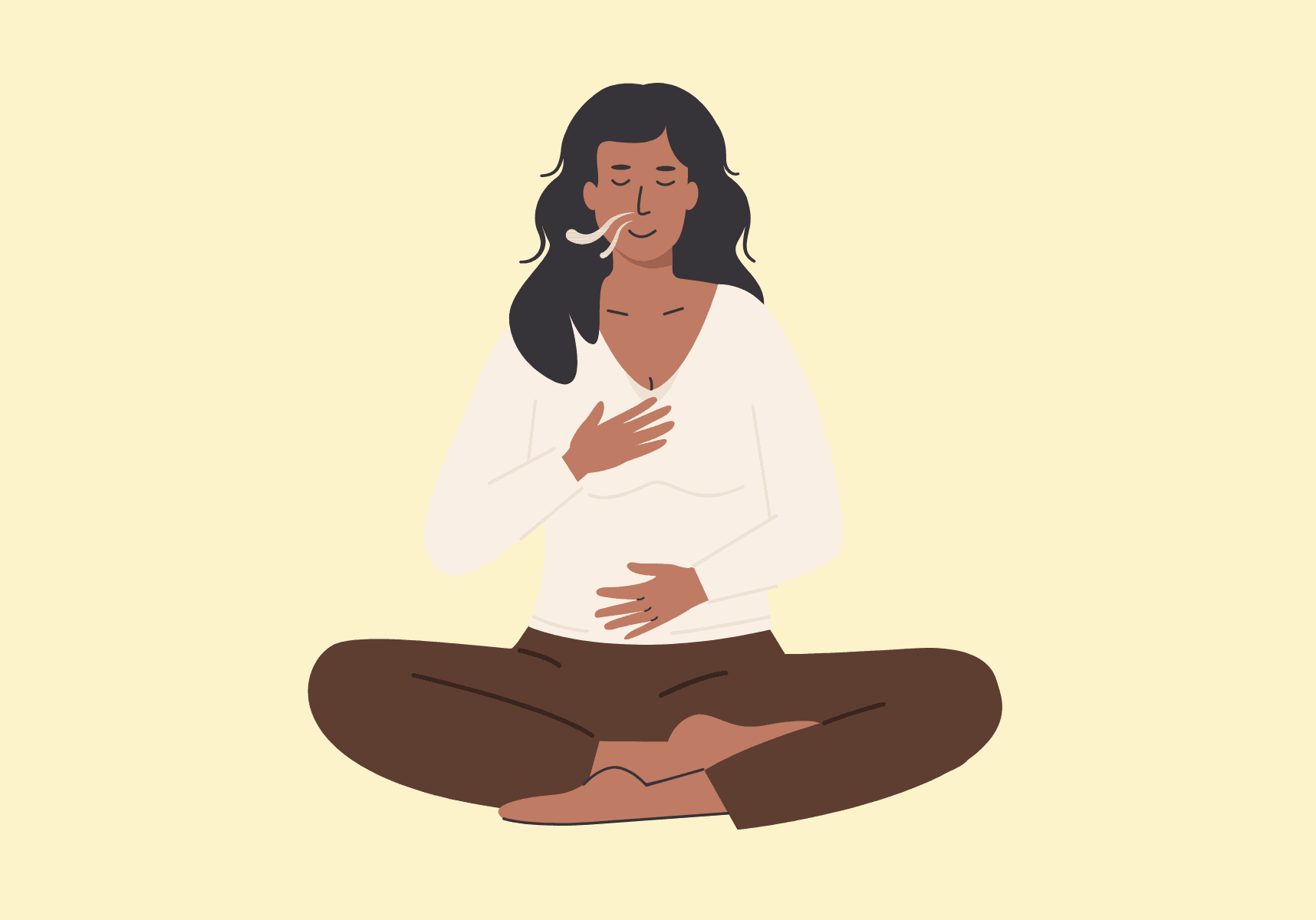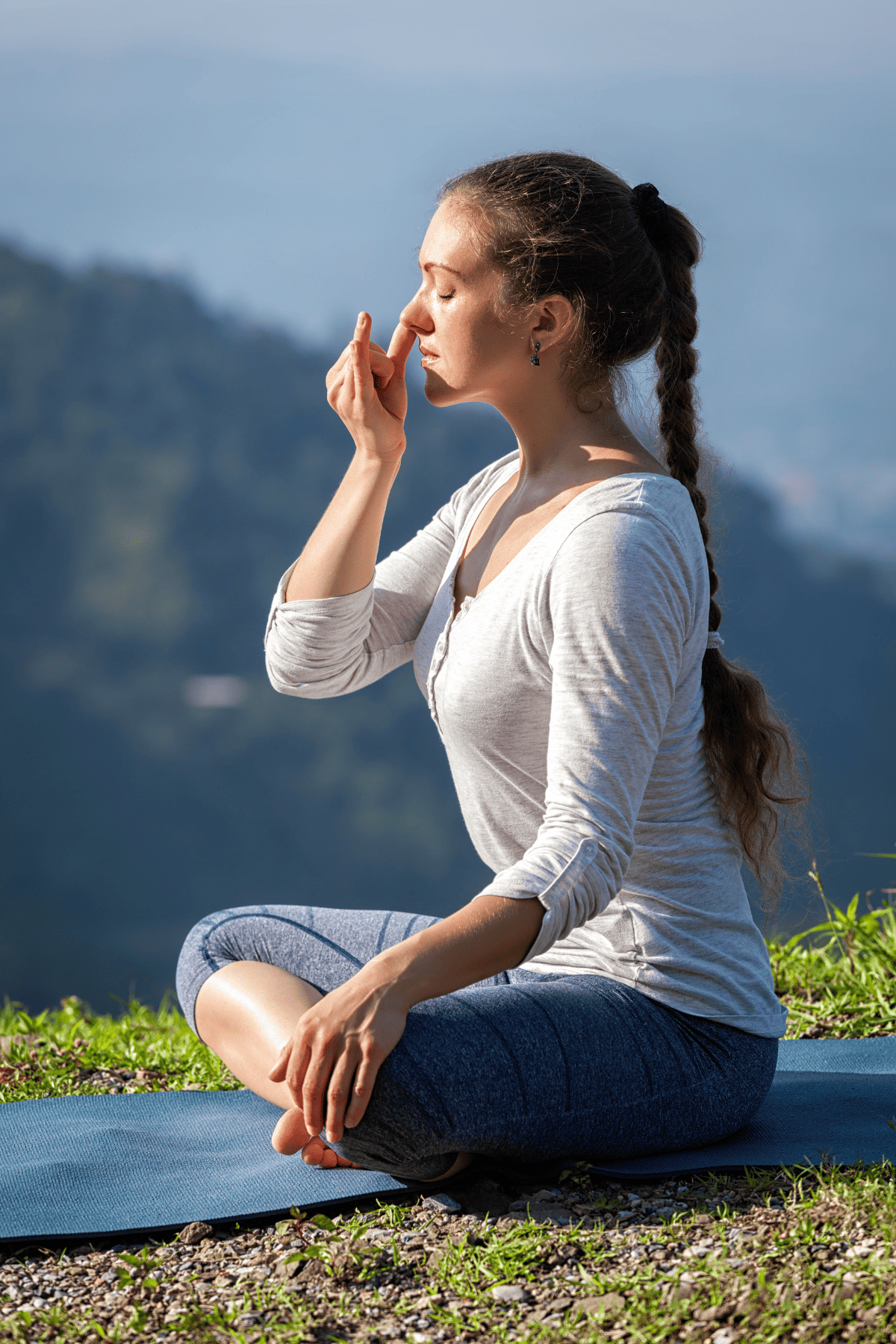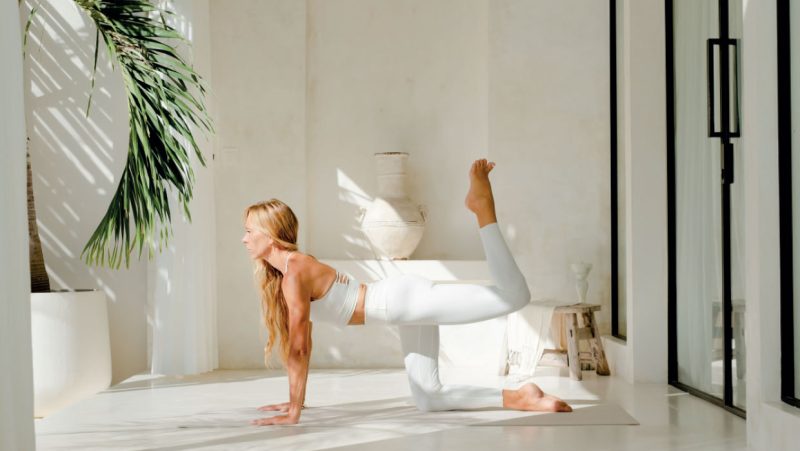
25-Minute Pranayama Practice for a Calm Mind
A Journey into Pranayama for Mind, Body, and Spirit Harmony - By Allison Eaton
Reading time: 5 minutes
Pranayama, a foundational aspect of yoga, encompasses various breathing techniques aimed at enhancing physical, mental, and spiritual well-being. It's a profound practice that extends beyond mere respiration, delving into the intricate connection between breath and consciousness.
In today's fast-paced world, where stress and anxiety are prevalent, maintaining a calm mind is essential for overall health and vitality. One effective method to achieve this is through a dedicated Pranayama practice.
In this article, we'll explore the significance of Pranayama and the transformative benefits of incorporating a 25-minute Pranayama routine into your daily life.
Definition and origins of Pranayama
Pranayama derives from the Sanskrit words "Prana" meaning life force or vital energy, and "Yama" meaning control or restraint.
It involves various breathing techniques designed to regulate and manipulate the breath to influence the flow of Prana within the body.
Originating from ancient Indian scriptures like the Yoga Sutras and Hatha Yoga Pradipika, Pranayama has been practiced for centuries as a means to achieve physical health, mental clarity, and spiritual awakening.
The role of breath in Pranayama
In Pranayama, breath serves as a bridge between the body and the mind. Each inhalation infuses the body with oxygen, vitalizing cells and organs, while each exhalation releases toxins and tensions, promoting relaxation and purification.
Beyond its physiological functions, the breath is intricately linked to the autonomic nervous system, influencing our state of mind and emotions. Through conscious manipulation of the breath, practitioners can regulate their mental and emotional states, promoting balance and harmony within.
Pranayama techniques
Pranayama encompasses a diverse array of techniques, each with its unique effects on the body and mind. From simple deep breathing exercises to more advanced practices like Nadi Shodhana and Kapalabhati, there's a technique suitable for practitioners of all levels. These techniques may focus on elongating the breath, balancing the flow of energy channels (nadis), or generating internal heat (tapas) to awaken dormant energies and expand consciousness.
Preparing for Your Practice
Setting up a conducive environment
Before beginning your Pranayama practice, create a tranquil space free from distractions. Choose a quiet room with ample ventilation and natural light, ideally free from clutter and electronic devices. Consider incorporating elements of nature such as plants or soothing music to enhance the ambiance and facilitate relaxation.
Proper posture and alignment
Maintaining proper posture is crucial for optimizing the flow of energy during Pranayama. Sit comfortably on the floor or a chair with your spine erect and shoulders relaxed. Keep your hands resting on your knees or in a mudra (hand gesture) to facilitate energy flow. Ensure that your head, neck, and spine are aligned to allow for unrestricted breathing and energy circulation.
Mental preparation and intention setting
Before starting your practice, take a few moments to prepare a positive mindset and set your intentions. Reflect on the purpose of your practice, whether it's to reduce stress, enhance focus, or deepen your spiritual connection. Cultivate an attitude of gratitude and receptivity, welcoming whatever experiences arise during your Pranayama journey with openness and acceptance.
The 25-Minute Pranayama Practice
Begin with centering and grounding breaths
-
Anulom Vilom (Alternate Nostril Breathing)
Anulom Vilom, also known as Nadi Shodhana, is a balancing breath that harmonizes the flow of Prana through the body. Sit comfortably in a cross-legged position and close your right nostril with your right thumb. Inhale deeply through your left nostril, then close it with your ring finger and exhale through the right nostril. Continue this alternate nostril breathing pattern for several rounds, focusing on the rhythmic flow of breath and the sensation of energy moving through your body.
-
Deep diaphragmatic breathing
Deep diaphragmatic breathing, also known as abdominal breathing, engages the diaphragm to maximize lung capacity and oxygen intake. Lie down on your back with your knees bent and feet flat on the floor. Place one hand on your abdomen and the other on your chest. Inhale deeply through your nose, allowing your abdomen to rise as you fill your lungs with air. Exhale slowly through pursed lips, feeling your abdomen gently contract as you release the breath. Repeat this deep breathing technique for several minutes, focusing on the expansion and contraction of your abdomen with each breath.

Energizing breaths to energize the mind
-
Kapalabhati (Skull Shining Breath)
Kapalabhati is a dynamic breathing technique that cleanses the respiratory system and energizes the body. Sit in a comfortable position with your spine erect and hands resting on your knees. Take a deep inhalation through your nose, then forcefully exhale through your nostrils by quickly contracting your abdominal muscles. Allow the inhalation to occur passively as your abdomen relaxes. Repeat this rapid exhalation-inhalation cycle for 1-3 minutes, focusing on the sensation of energy rising through your body with each breath.
-
Bhastrika (Bellows Breath)
Bhastrika is a vigorous breathing exercise that generates heat and stimulates the nervous system. Sit with your spine straight and shoulders relaxed. Take a deep inhalation through your nose, then forcefully exhale through your nostrils while simultaneously pumping your arms up and down in a rapid, rhythmic motion. Inhale forcefully as you raise your arms and exhale forcefully as you lower them. Continue this bellows-like breathing pattern for 1-3 minutes, feeling the surge of energy coursing through your body with each breath.
Develop calmness and tranquility
-
Ujjayi (Victorious Breath)
Ujjayi is a soothing breath that enhances concentration and calms the mind. Sit comfortably with your spine erect and shoulders relaxed. Inhale deeply through your nose, then exhale slowly through your nose while constricting the back of your throat to create a gentle hissing sound. Continue this oceanic breath pattern for several minutes, allowing the rhythmic sound of your breath to anchor your awareness and quiet the fluctuations of the mind.
-
Nadi Shodhana (Channel Cleaning Breath)
Nadi Shodhana, or alternate nostril breathing, balances the flow of energy through the body's subtle energy channels (nadis). Sit in a comfortable position with your spine straight and shoulders relaxed. Close your right nostril with your right thumb and inhale deeply through your left nostril. Close your left nostril with your ring finger and exhale slowly through your right nostril. Inhale through the right nostril, then close it and exhale through the left nostril. Continue this alternate nostril breathing pattern for several minutes, feeling the harmonizing effect of the breath on your mind and body.
Deep relaxation and rejuvenation
-
Sheetali (Cooling Breath)
Sheetali is a cooling breath that calms the nervous system and reduces body heat. Sit comfortably with your spine erect and shoulders relaxed. Roll your tongue into a tube shape or purse your lips if you're unable to roll your tongue. Inhale deeply through your rolled tongue or pursed lips, then exhale slowly through your nose. Continue this cooling breath pattern for several minutes, feeling the soothing sensation of cool air entering your body and calming your mind.
-
Shavasana (Corpse Pose) with awareness of breath
Shavasana, or Corpse Pose, is a deeply relaxing posture that promotes integration and assimilation of the benefits of your Pranayama practice. Lie down on your back with your arms and legs extended comfortably, palms facing up. Close your eyes and allow your body to relax completely, sinking into the support of the earth beneath you. Bring your awareness to your breath, observing the natural rhythm of inhalation and exhalation without any effort to control it. Rest in this state of deep relaxation for 5-10 minutes, allowing the rejuvenating effects of your practice to permeate every cell of your being.
Integrating Pranayama into Daily Life
Tips for incorporating short Pranayama practices throughout the day
Incorporating brief Pranayama practices into your daily routine can help you stay grounded and centered amidst the demands of modern life. Set aside a few minutes in the morning or during breaks to practice simple breathing exercises like deep belly breathing or conscious breath awareness. Use cues such as entering a room or sitting at a red light to remind yourself to pause and take a few conscious breaths, reconnecting with your inner calm and clarity.
Recognizing the benefits of consistency
Consistency is key to reaping the full benefits of Pranayama practice. Make a commitment to practice regularly, even if it's just for a few minutes each day. Notice how consistent practice enhances your overall well-being, from improved respiratory function and stress resilience to heightened mental clarity and emotional balance. Trust in the transformative power of your practice and embrace the journey of self-discovery and self-mastery it offers.
Potential challenges and how to overcome them
As with any new endeavor, you may encounter challenges along your Pranayama journey. Common obstacles include distractions, restlessness, and resistance to change. Approach these challenges with patience and compassion, recognizing them as opportunities for growth and learning. Experiment with different techniques and practice environments to find what works best for you. Cultivate a sense of curiosity and playfulness in your practice, exploring new possibilities and embracing the inherent fluidity of your journey.
Conclusion
In conclusion, the practice of Pranayama offers a powerful tool for cultivating a calm mind, vibrant health, and inner peace. By incorporating a 25-minute Pranayama routine into your daily life, you can tap into the profound wisdom of ancient yogic teachings to harmonize your body, mind, and spirit. As you embark on this transformative journey, remember to approach your practice with dedication, patience, and an open heart. May your exploration of Pranayama lead you to ever-deepening levels of self-awareness, vitality, and joy.







